Line Magnetic LM-88IA, LM-150IA, LM-845IA, LM-805IA and LM-845 Premium – part 2
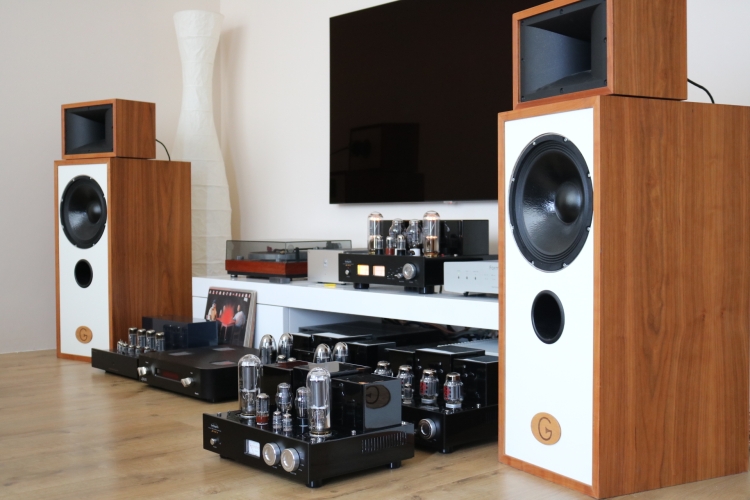
Line Magnetic with Gustavson speakers
Currently, the secondary system is a work in progress. For example, I’ve not yet decided which amplifier and speakers to use. So far, I’ve been using the PrimaLuna DiaLogue Premium amplifier with EL34 tubes, combined with whichever speakers are over for review or visiting courtesy of a friend. For this review, I had envisioned to use Xavian speakers but alas the delivery got delayed and so I had to come up with a contingency plan. I turned to Peter van Doornum of Gustavson Audio and explained my motives and he was more than happy to let me use his LS-One speakers, which I had already reviewed not too long ago. As it turned out, all the Line Magnetic amplifiers worked marvelously with these speakers. Near the completion of this review, the Xavian speakers arrived and so I was still able to use them with the Line Magnetic amps but I’ll report on that in the separate Xavian review.
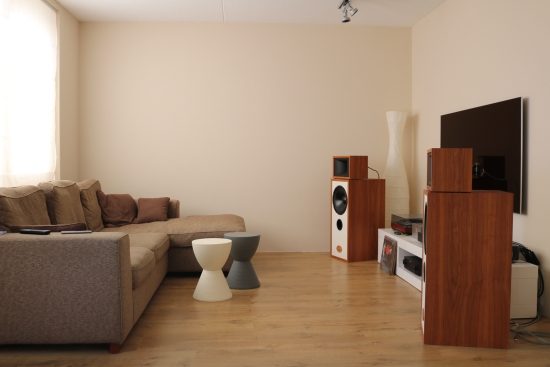
To start off, first I needed to re-assess the Gustavsons in this particular setup. The room has a different shape and so the sound is different from that in the main listening room, where I initially reviewed these speakers. Fortunately, the relatively big speakers had no issues at all performing in this room, not even when the left-hand speaker is relatively close to the side wall. There were no weird phase issues and no bass boom. The only thing that I could notice on occasion was that the left speaker had more bass reinforcement than the right speaker. But this was only with certain music and not at all detractive. To re-familiarize myself with the speakers in this room, I started with the Ayon Stealth DAC/preamp and Push-Pull PrimaLuna DiaLogue Premium amp with EL34 tubes. The source for all listening in this room is the AudioAanZee Reference Flow music server with Euphony Drive running Roon Ready. Well, it must be said: these really are very special speakers, quite unlike typical box speakers, and they still combine very well with the PrimaLuna. As soon as you start listening to music using these speakers, especially with tubes added to the mix, the critical mind shuts off and the emotion flows.
During all my reviews of tube amps, I’ve always found the 4-ohm outputs to sound best, even with speakers that have an 8-ohm rating. So, for this review, I’ve always used the 4-ohm outputs except where noted differently.
Line Magnetic LM-88IA as a power amp
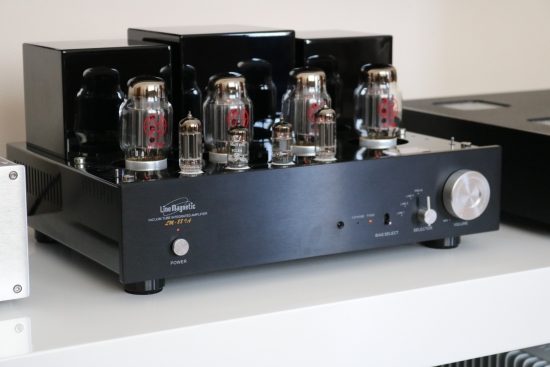
For all the tube amps that have visited these quarters, none of them used KT-88’s and therefore, unlike with the Tung-Sol KT-150’s, I have no expectations of how they should sound. The LM-88IA uses JJ tubes, delivering 45 watts. Going from the PrimaLuna power amp, still fed from the Ayon Stealth DAC/Preamp to the Line Magnetic LM-88IA, the latter used as a power amp via its “pre-in” inputs, there was an immediate increase in refinement, resolution, and airiness. With the sensitive Gustavsons, the Line Magnetic amp has a tiny bit of hum which is really very normal for just about any tube amp when used with a sensitive speaker but nonetheless, I should note that the PrimaLuna is even quieter. But it’s the sound that counts and the LM-88IA’s sound was every bit as sonorous and powerful but tighter and more transparent yet also considerably smoother. Especially from the upper midrange and up, the Line Magnetic amp was a lot more refined and a lot more forgiving, in spite of being more revealing. Along with this came a soundstage that seemed larger overall but most of all deeper and more clearly layered and separated in the depth plane.
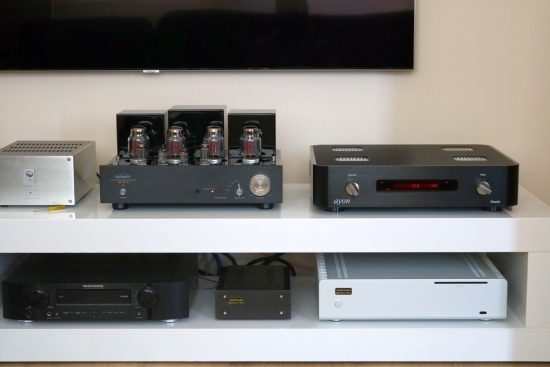
The PrimaLuna arguably still has a more impactful sound, making percussive sounds come across as being more impressive at times. But the Line Magnetic has a kind of magic that I do not hear with the PrimaLuna. There is an immediate emotional engagement with this amp that draws you in and makes it hard to stop listening. Its timbre is also very natural timbre which, coupled with its high level of refinement is also very appealing and the more I listened to it, the more I was sucked into the performance.
Line Magnetic LM-88IA as an integrated amp
So far, this was still using the LM-88IA as a power amp only, combined with the Ayon Stealth DAC/preamp. Taking the latter out of the equation and adding the Aqua Formula xHD DAC and using the LM-88IA as an integrated amp, the presentation became more neutral and more transparent. Some of the aforementioned sonority and bass solidity were now reduced but in its place came a higher level of transient snap, resulting in a higher level of excitement. While it was now more neutral and transparent, the LM-88IA’s inherent relaxed and smooth character was retained and the emotional aspect still shone through, now combined with more points scored in audiophile parameters. The observed differences are in line with how the Ayon and Aqua are known to compare but also clearly demonstrates that the LM-88IA’s preamp section is itself pretty transparent. It does not in any way mask the differences in the front end and fully showcases the Aqua’s impressive resolution.
To fully assess all the Line Magnetic amps’ capabilities, I opted to do the rest of this part of the review with them in integrated amp mode. I will further assess their power amp capabilities in the next part of this review, using the CH Precision C1 DAC/controller as the preamp and the Wilson Watt/Puppy speakers.
Unlike the other Line Magnetic amps that I tested, the LM-88IA can be used in two modes: fixed bias and cathode bias. The latter is a form of auto bias and in this implementation, it also changes the amp’s character, from neutral, tight and articulate to warmer, more rounded and smoother. I preferred the former mode using fixed bias as it was already producing a nicely sonorous and smooth sound but I can certainly imagine people falling for the extra-lush performance using cathode bias, too.
LM-150IA as an integrated amp
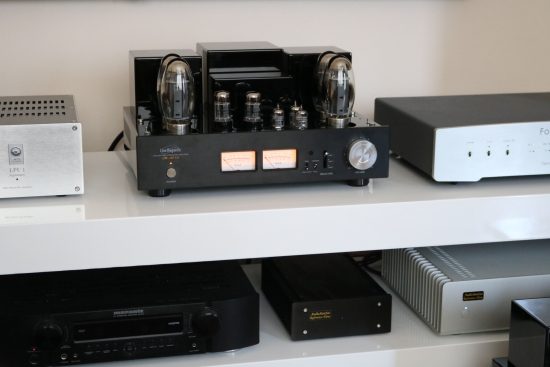
The LM-150IA is also a Push-Pull design but with more modern and more powerful tubes. From earlier experiences, I already knew that these KT-150 tubes seemed to hold the precious middle ground between transistor neutrality and free-flowing tube magic and the LM-150IA indeed further solidified my suspicions.
This amp uses KT-150 tubes made by Tung-Sol, the very same ones as I use with the PrimaLuna (when I don’t use the EL-34’s) and also the same ones as are used in the Audio Research Ref75SE. The latter is biased conservatively to deliver 75 watts. The LM-150IA delivers 100 watts. For a comparison, see part 4 of this review.
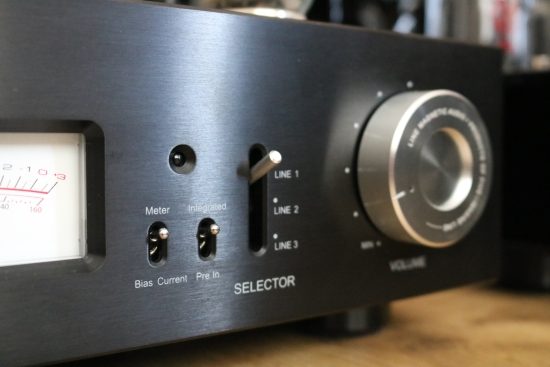
Swapping the LM-88IA for the LM-150IA using the same setup, the former amp’s subtle hum was gone. However, there was now a mechanical hum, seemingly coming from the smallest of the top-mounted square enclosures. I mention this only because none of the other Line Magnetic amps have any mechanical hum. This is no issue, though, as it was not any louder than the mechanical hum that I often hear from solid state amps (the Rowland model sixes included) and it was not audible from the listening position.
Much in line with my earlier experiences with KT-150 tubes, the LM-150IA is a very neutral amp. Its sound was cleaner, less sonorous, less voluptuous compared to the LM-88IA. The latter sounds fuller in the midbass, but one could probably also call that coloration. It’s a matter of perspective and personal taste. With the Gustavsons, in any case, this resulted in a more cerebral and less magical sound. But it was also evident that this amp is very confident and very powerful. Especially bass-drum and percussion sounded more realistic and more impressive, more so, too than with the PrimaLuna. The LM-150IA’s bass was less voluptuous than with the LM-88IA but tighter and better defined. Its treble was again superb: refined, articulate, airy and open yet completely free from edginess.
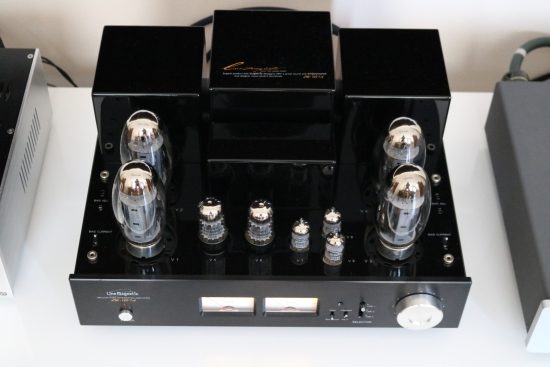
Naturally, there is an adjustment period when switching from one kind of delivery (a smooth one) to another (a cleaner one). One simply gets used to a certain sound, but sure enough, after having fully acclimatised to the more neutral sound of the LM-150IA, it dawned on me that it has the hallmarks of a very good transistor amp such as great bass control and articulation, lots of power and fast pacing, combined with a level of nuance and openness as well as a lack of dynamic restraint that is hard for many transistor amps to achieve. If that sounds like the opposite of what one might hope to achieve when going for a tube amp I should note that I don’t personally lean toward one technique or the other. I’m happy with whichever amplification technique that yields the best results in a given situation. I should probably also note that my current reference in transistor amplification is the CH Precision A1 power amp that I use in the main listening room and since I used it, it has proven to be incredibly difficult for any tube amp to approach the A1 in terms of transparency, articulation, and tightness. The LM-150IA, however, comes closer than any of the ones tested before.
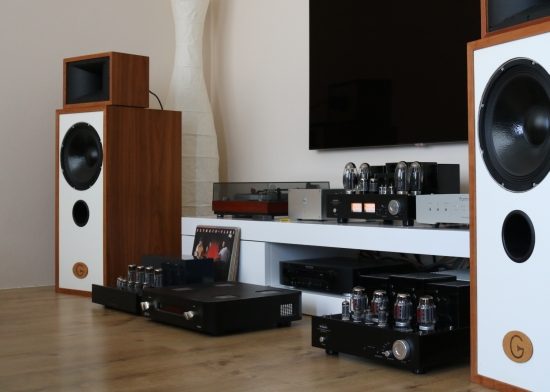
On another note, when combining speakers and amplifiers, it is always very much a case of horses for courses, meaning that it is important to pair a given speaker with the appropriate amp. It is often said that a power amp cannot be too powerful but I find that very powerful amps like to be able to distribute more than only a fraction of their power, to be in their element. When pairing a very powerful amp with very efficient speakers, this can lead to a more constrained, less free-flowing presentation than the amp really is capable of. A good example of this can be read in my review of the AvantGarde Unos. In the case of the LM-150IA, this would also turn out to be true, for when I paired it with the Duetta Signatures it delivered the absolutely most glorious sound that I heard with these speakers so far! But I’ll dive into that in part 4 of this review.
Line Magnetic LM-845IA as an integrated amp
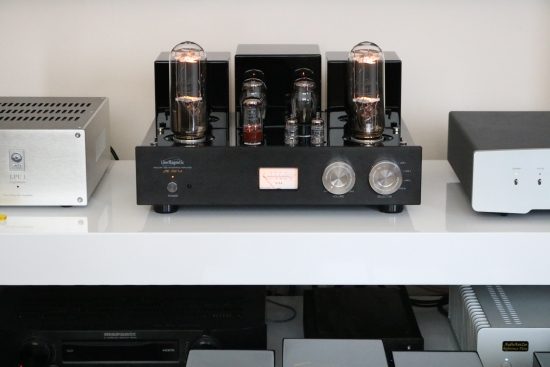
The LM-845IA can be considered an upgrade of the LM-518IA. It is a pure class A SET amp that uses a single Shuguang 845 tube per channel, to deliver 22 watts.
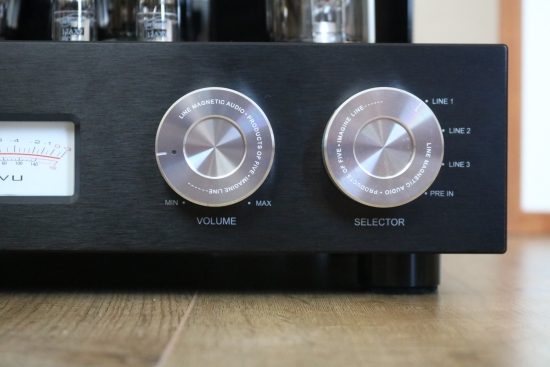
SET amps usually have a hum balancing control hidden somewhere inside the amplifier. The Line Magnetic amps, however, have this control on the top side where it can be accessed with ease. For all amps, I checked and corrected the bias according to the manufacturer’s specs and set the hum balancer to produce the lowest hum.
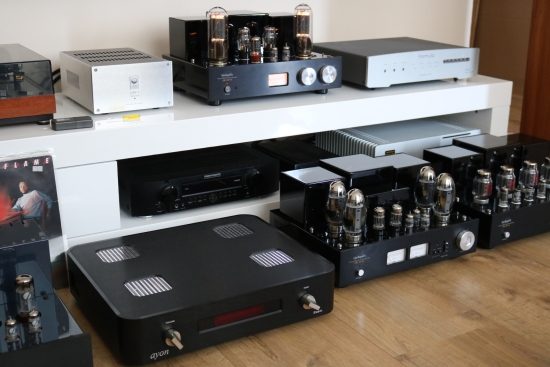
Swapping the LM-150IA for the LM-845IA using the same setup, to my surprise there was no hum to speak of, which is quite unusual for a SET design! The Vaic SET amps, by example, which I’ve heard again right after they had been serviced to minimize their hum and new tubes had been fitted, still had a significant hum that was even audible from the listening position when not playing music.
The LM-845IA’s presentation was different from the two Push-Pull designs but highly fascinating from the start. The sound is not as obviously linear as with the PP designs, but with this amp, it seemed like there was more going on as if the musicians were more motivated and playing more vigorously. Even pieces of music that seemed ordinary with other amps were infused with a newfound presence and life. This was really quite astounding, and at times I was actually listening with my mouth agape! Yes, SET can have that effect, with the right speakers. These Gustavsons are very easy to drive and fortunately so are the Wilsons but Apogee magnetostatics, for example, need not apply. In this case, however, the sound is detailed, tight, fast, pure, very dynamic and wide-open but also refined and oh-so free-flowing. That last aspect seems to be one of the typical SET strengths. These amps have the uncanny ability to put the performer right there in the room with you. I’ve heard this before with the Vaic Reference 520 P-SET amps and with the Line Magnetic amp once again it seems that soundstage size, depth, and layering is a particular SET-forte. The sound is very pure, not warm or thick or rose-tinted in any way, but extremely natural and involving and at times pure magic. That purity and magic midrange is another quality that is often associated with SET designs but I should note that while many SET amps sound magical, not all sound this utterly pure.
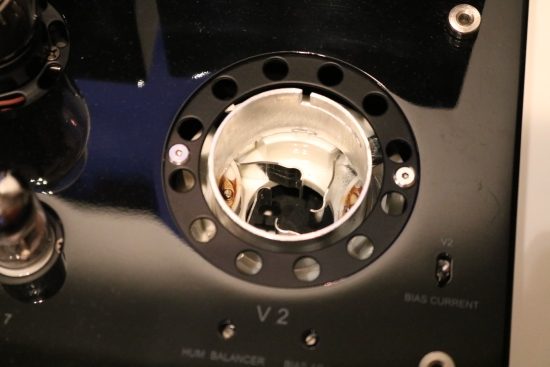
LM-845IA power tube socket
With the LM-845IA, the sound is pretty much as pure as it gets but it also has excellent bass control and the timbre is wholly convincing. Sure, this 22-watt amp does not have the tight control and raw power in the bass that the LM-150IA has but with the Gustavsons, it has more than enough and it could truly play as loudly as I liked. Even when pushing it, the watt meters did not go much further than halfway. At some point, I played a recent Madonna album with very heavy electronic drums and as I cranked up the volume I got something of an Adrenaline-rush. This was pure fun!
Line Magnetic LM-805IA as an integrated amp
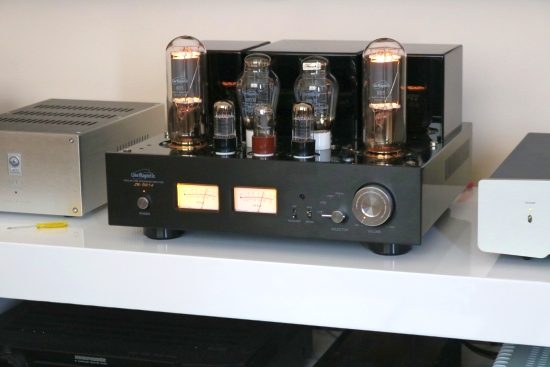
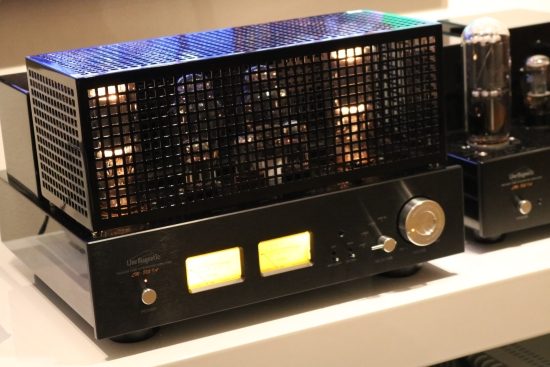
The LM-805IA is a pure class A SET amp that uses a single Shuguang 805 tube per channel, to deliver 48 watts.
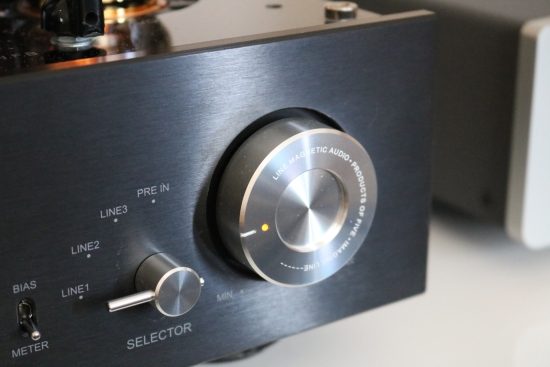
Swapping from the LM-845IA to the LM-805IA using the same setup, interestingly, the sound was similar but also different. Where the two amps were similar was in terms of the openness, dynamics and superbly free-flowing quality of the soundstage. The difference was that the LM-805IA sounded considerably fuller, smoother and richer. The LM-805IA was also much more powerful and sonorous in the bass, significantly richer and smoother through the midrange, and gentler and more fluid in the treble. And, of course, it actually has more power, too. The latter was not required with the Gustavsons as they played more than loud enough with the 22-watt LM-845IA, but I did notice that some more dynamically demanding music was reproduced with more ease when playing loudly. At times it was like the amp was begging me to go louder. And when I did, not once did it sound stressed, rounded or compressed. And not once did I manage to get it to distort. Not that I heard anything of the sort with the LM-845IA.
Variable Negative Feedback
The LM-805IA has something rather unique: a variable Negative feedback control. This is something that I have only ever seen before on the CH Precision amps and is something that I find to be very useful. Line Magnetic does not specify precisely what the button does or if any other form of feedback remains and if so in what ratio but from operating it, it quickly became evident that the lowest value represents the lowest amount of Negative Feedback, with the amount of Feedback increasing with every step up. The biggest difference is between the first and second step, with smaller increases thereafter.
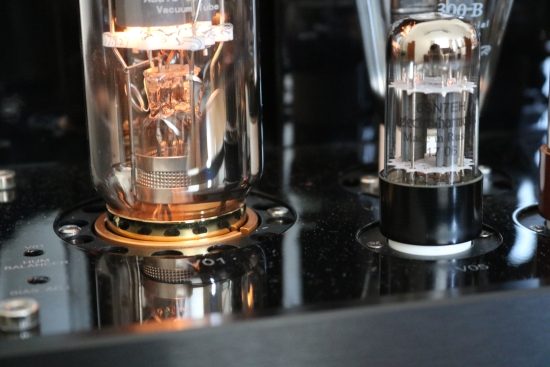
LM-805IA power tube socket
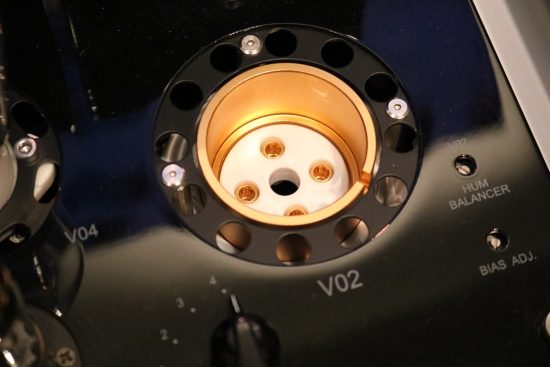
The lowest setting makes for the utmost free-flowing soundstage with the biggest depth and it produces vocals that float freely in the air, leaping out from the background, far into the room. This setting produces the smoothest, creamiest sound and as such is also most forgiving of lesser recordings, but you do pay a price in bass precision and timing. With this setting, the bass is still quite powerful and even more voluminous than at higher settings. This may actually explain some of the effects that I heard first when using the Vaic amps (that have no/very little feedback) with the relatively sensitive Dali Ikon 6 speakers and their bass power really surprised me when compared with the same speakers driven with various transistor amps.
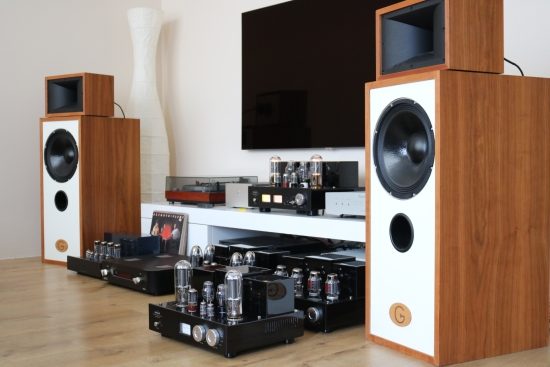
When increasing the Negative Feedback on the LM-805IA, the bass does get considerably tighter, more incisive and more articulate and the whole presentation becomes cleaner and more controlled, which, technically speaking, is probably truer to the source. When switching back and forth using various pieces of music, it became clear that the lowest setting, while emotionally most engaging, did reduce instrument separation, “gelling” everything more together in a slightly blurry manner. You could say that in this case one of the typical SET strengths got enhanced while another got reduced. The beauty of this option, of course, is that one can simply select the setting that is most appropriate, or most complimenting the speakers of choice. For example, if a very tight-sounding speaker is used that may err to the over-controlled, then a lower Negative Feedback setting will reign things in nicely. Likewise, when using a speaker that requires some more control, then a higher setting will pull things in focus.
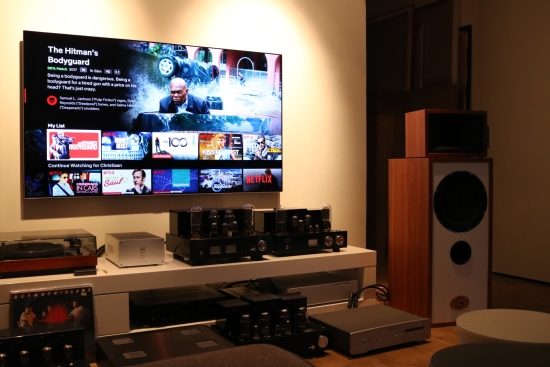
Part 1 – Introduction
Part 2 – Review using Gustavson speakers
Part 3 – Review using Wilson speakers
Part 4 – Review using Duetta Signature speakers
Part 5 – LM-845 Premium and Conclusion
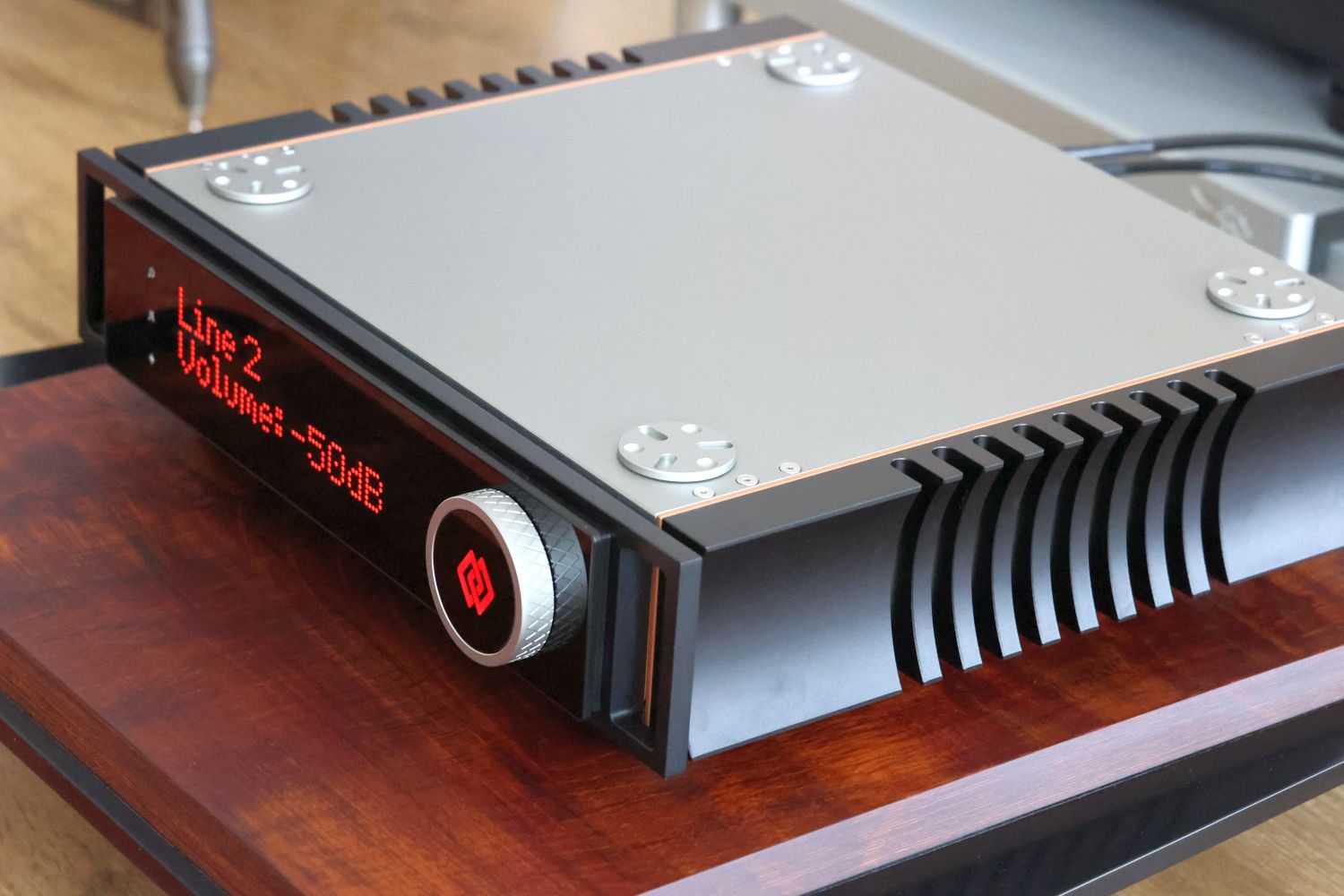
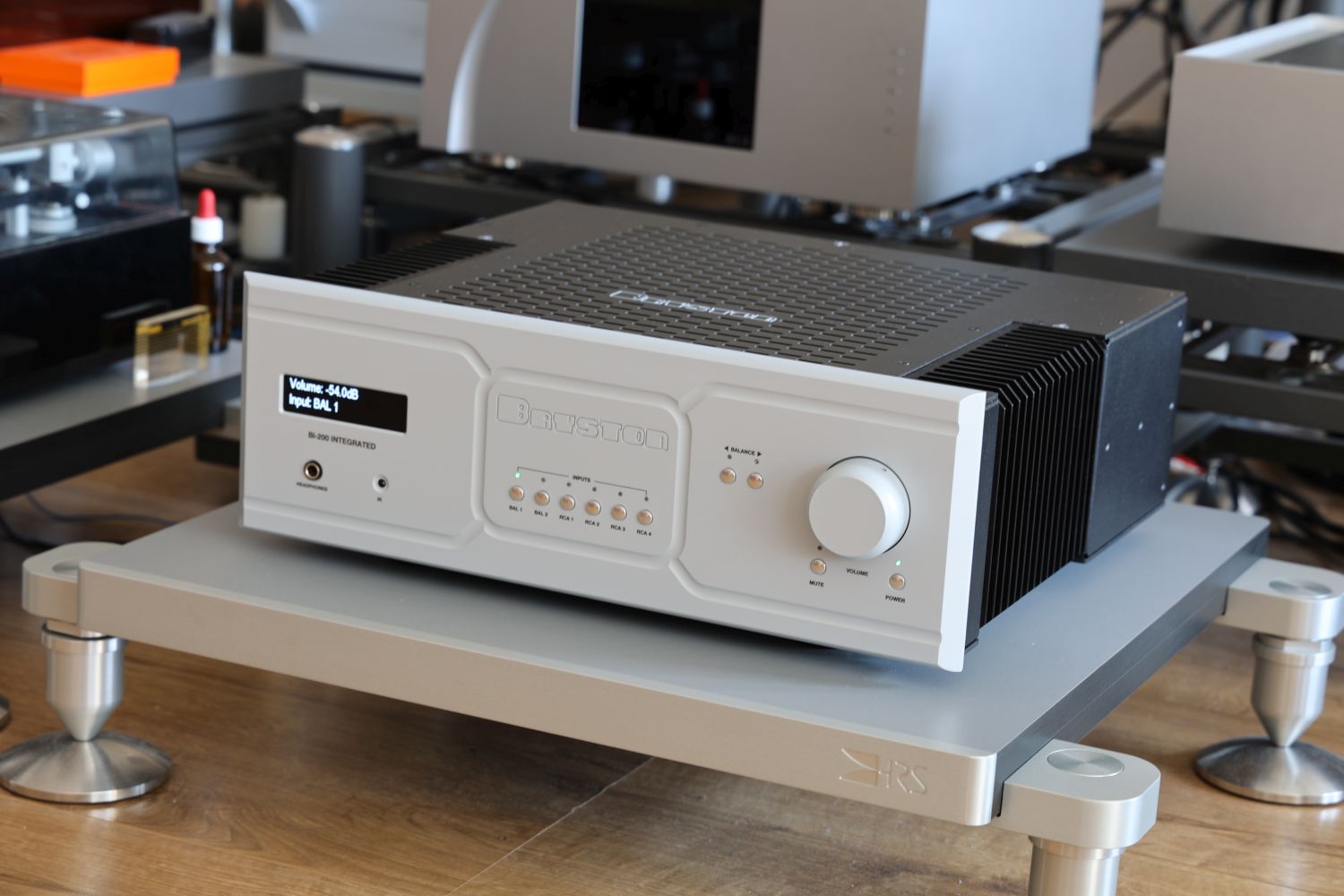
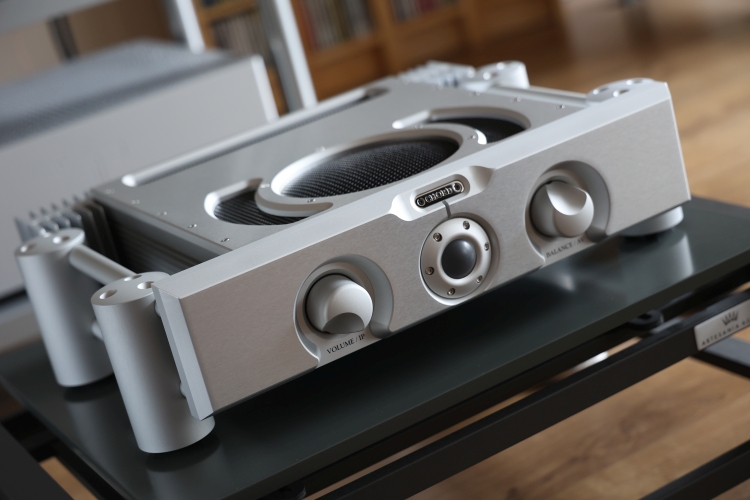
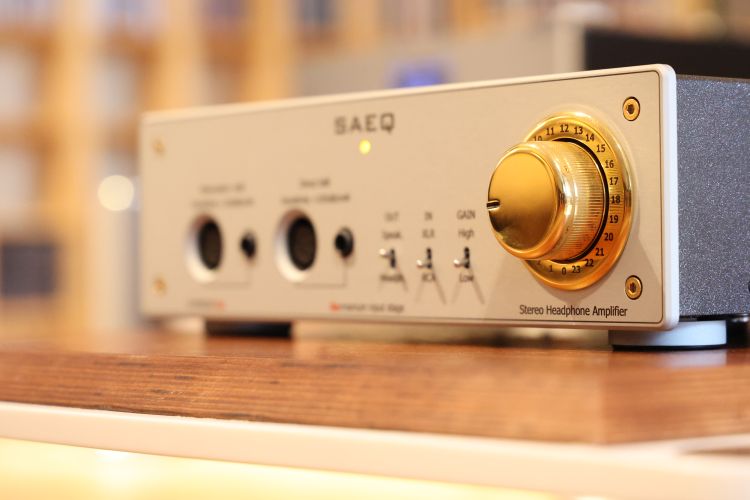
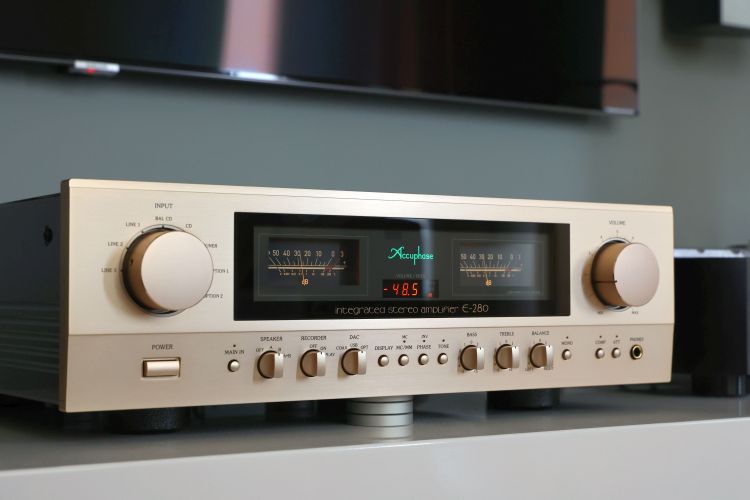
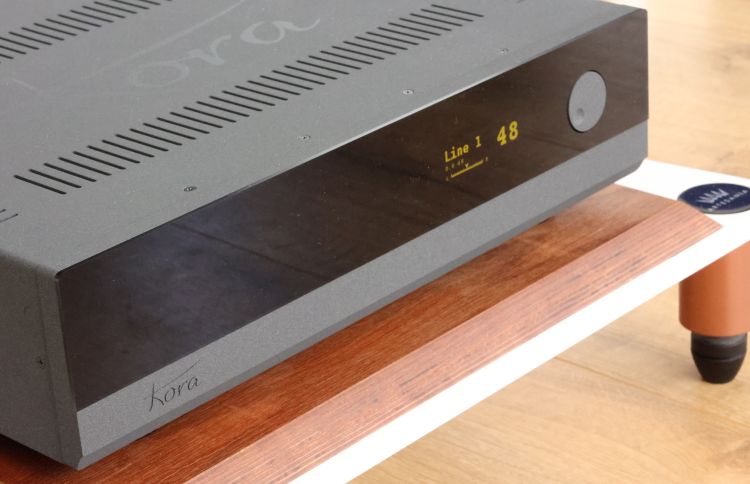
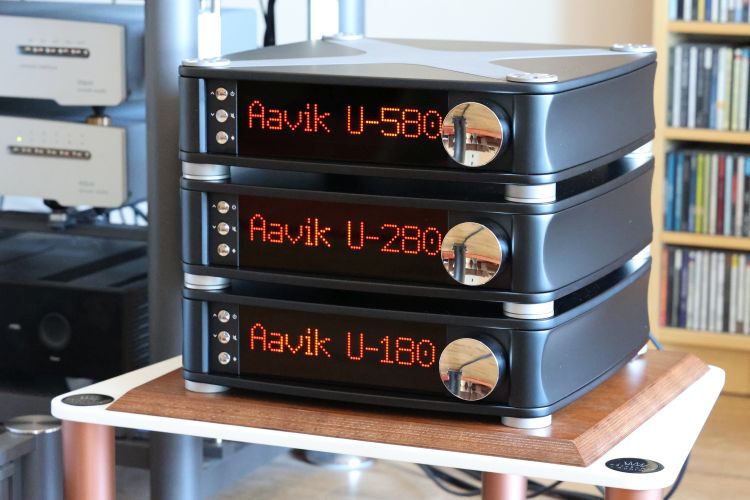
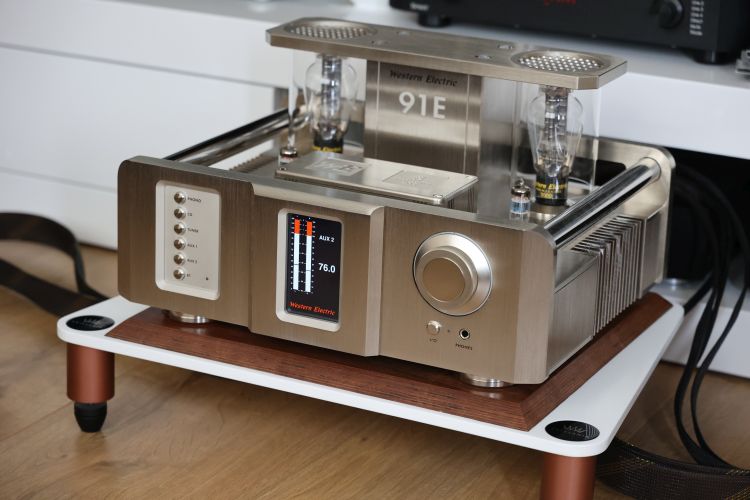
Hi Christiaan,
You have reviewed many amplifiers, I take it – could you comment on how LM-150IA (Push-Pull) or LM-845IA / LM-805IA (SET) setups compare against good class-A solid state amplifiers. As, for example, FirstWatt/Pass amplifiers.
Is the difference between push-pull and SET so obvious when it comes to layering and harmonics, or is it just “would rather, but not so, really”? Do LM-845IA / LM-805IA amplifiers get hot, like the class-A amplifiers do?
Thank you.
I´ve not directly compared Line Magnetic with Pass or First Watt so I cannot make hard claims of how they compare. But I think it is safe to say Pass sounds beefier and considerably more robust. First Watt is more relaxed – less tight-controlled, but still full/blooded and powerful. Of course, the biggest difference is how transistor amplifiers will usually be happier driving a low impedance or otherwise difficult speaker than most tube amps, certainly most SET tube amps. The difference between PP and SET is very obvious, IMO, not subtle at all. It´s in part a matter of harmonics but even more so one of flow and breath. LM-845IA / LM-805IA tubes get very hot indeed, subjectively even hotter than some Class A transistor amps that I have used.